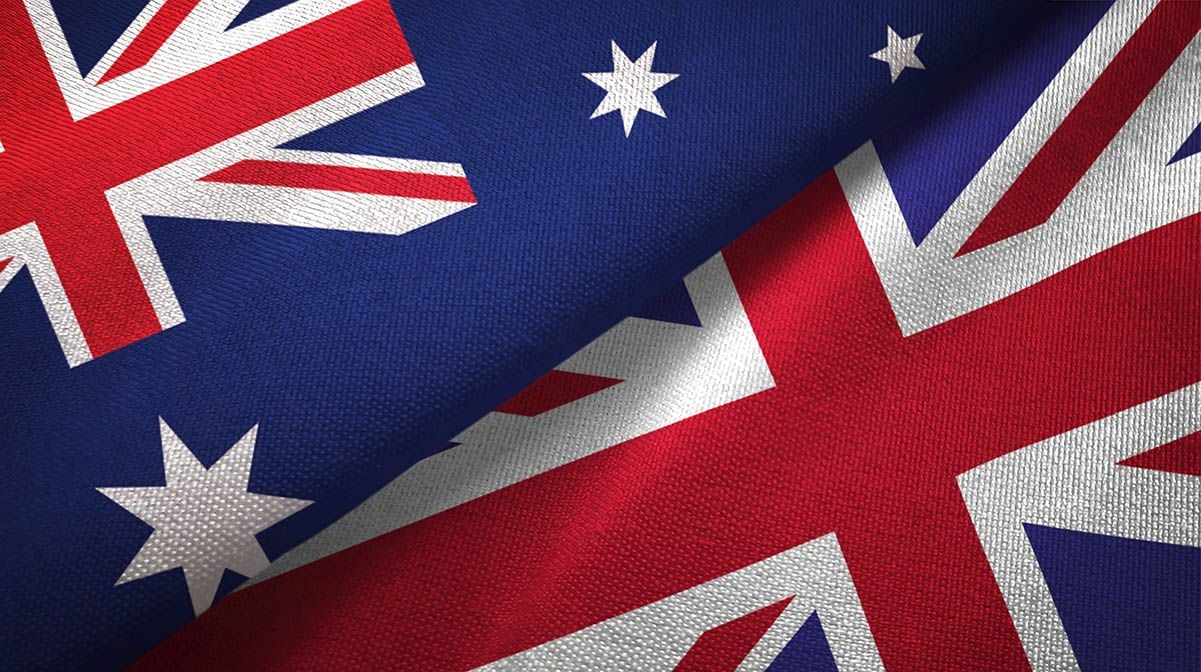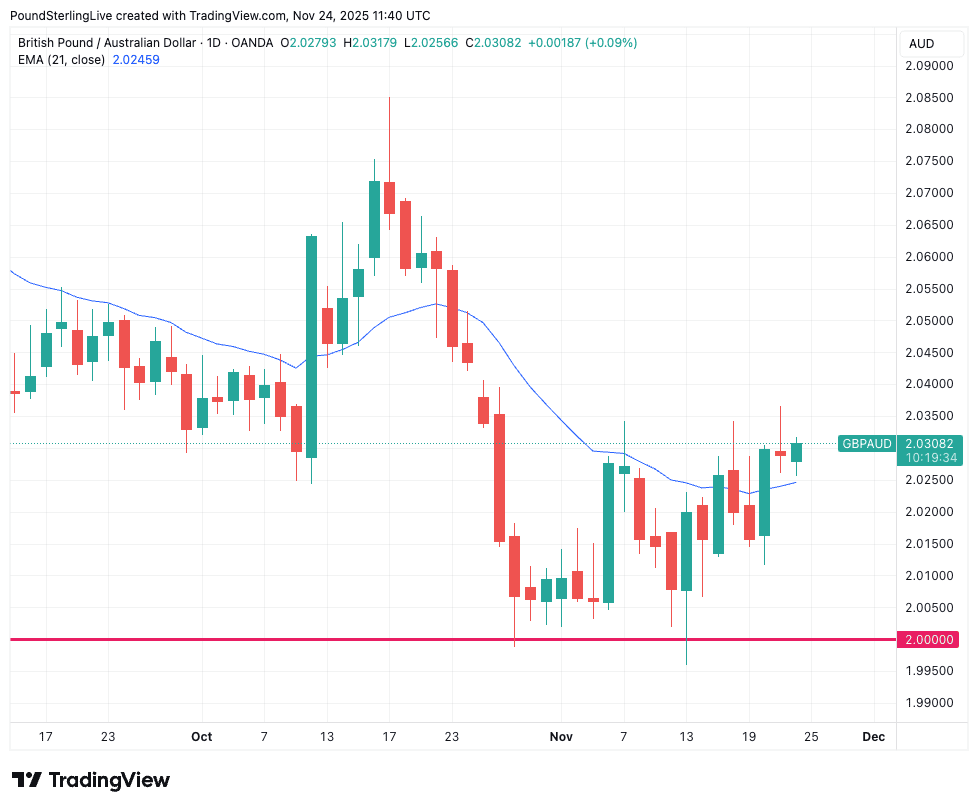
Image © Adobe Images
The pound is looking well supported against the Australian dollar here, but there are reasons to be cautious about betting on significant strength.
The pound to Australian dollar exchange rate (GBP/AUD) trades higher at 2.0303 at the time of writing on Monday, having broken above the 21-day exponential moving average (EMA) last week, and setting itself up for a more constructive near-term outlook.
Given the development, we would have to fancy further gains by GBP/AUD as part of our Week Ahead Forecast, targeting a move to 2.0365 and then 2.04.
However, for this to happen, sterling would certainly require Wednesday's budget to pass without a hiccup, a tall order if we consider the Chancellor of the Exchequer has to find some £30BN in additional taxes.
This is an eyewatering sum that leaves the door wide open to mistakes and market disappointments. Given this, sterling is vulnerable heading into the event and this will limit GBP/AUD's upside potential in the first half of the week.
That being said, there's already a lot of bad news in the pound's value, meaning even a half-decent budget could do enough to propel it higher.
The uncertainty surrounding the event has weighed on the pound in the form of a risk premium that leaves it undervalued relative to bond market fundamentals.
"We remain of the view that the bar for a credible Budget should not be particularly high given the UK's more positive underlying fiscal dynamics than other G10 peers," says a note from Barclays.
"A credible Budget should help close the pound's c.2.5% fiscal premium," it adds.
GBP/AUD upside will nevertheless be resisted by the AUD's solid underpinnings.
The currency can now rely on a more cautious Reserve Bank of Australia (RBA), which is finding itself with less scope to cut interest rates much further, which naturally supports the currency.
"The RBA's relatively hawkish tone, with increased concerns about persistent inflation pressures, together with resilient data, will offer AUD some support compared with other major currencies," says Barclays.
Markets are pricing in limited easing for the RBA, and risks are increasingly skewed towards no further cuts in the months ahead, versus two Fed cuts expected in H1 next year.
"Meanwhile, China's growth outlook remains lacklustre, but we do not expect it to deteriorate much further, limiting any downdraft on AUD," adds Barclays.
Midweek, we have some Aussie inflation numbers to sink our teeth into, where anything above 3.5% would certainly boost AUD.
This is an outcome that economists at Westpac are on alert for, given they think inflation will rise to 3.9% y/y, which really puts into perspective the wisdom of cutting interest rates any further.
The RBA would almost certainly have to draw a line under the base rate on such numbers, or risk contributing to an ugly inflationary backdrop.
Note, from the October release onwards, Australia falls into line with the global norm, with the Monthly CPI release now the official CPI print, as opposed to the quarterly figure.
images/2025/H2/Aus-inflation.png

